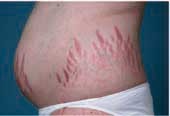Peer Reviewed
Feature Article Endocrinology and metabolism
Secondary causes of osteoporosis in women: diagnoses not to be missed
Abstract
About 20 to 40% of women with postmenopausal osteoporosis will have another cause in addition to oestrogen deficiency. Actively seeking out and treating these disorders may not only prevent or partially reverse the osteoporosis, but also reduce fracture risk.
Key Points
- Secondary osteoporosis is characterised by increased skeletal fragility and fracture risk over and above that seen with menopause.
- The qualitative changes seen in osteoporosis associated with secondary disorders result in fragility fractures occurring at higher bone mineral density (BMD) T-scores (-1.5 or less) than expected.
- Poor bone accrual during puberty, bone loss at menopause and changes seen with advanced ageing are compounded by secondary osteoporosis.
- Specific medications (aromatase inhibitors, corticosteroids, antiepileptic drugs, selective serotonin reuptake inhibitors, glitazones) used in medical conditions may interfere with normal bone remodelling and have detrimental effects on the skeleton.
- The treating physician should consider, seek out and treat any underlying secondary cause of osteoporosis before recommending specific antiosteoporotic pharmacological agents.
Purchase the PDF version of this article
Already a subscriber? Login here.

